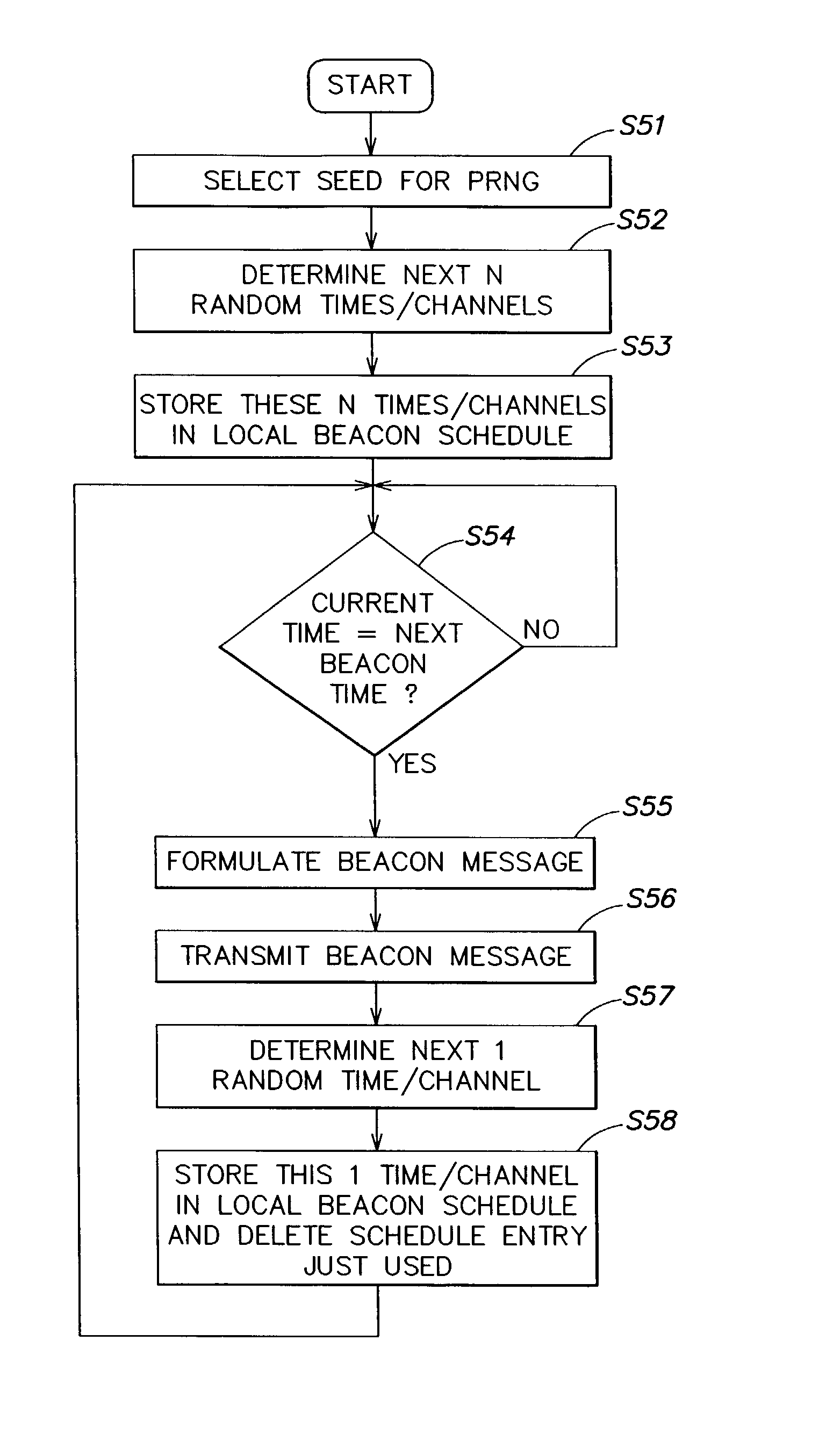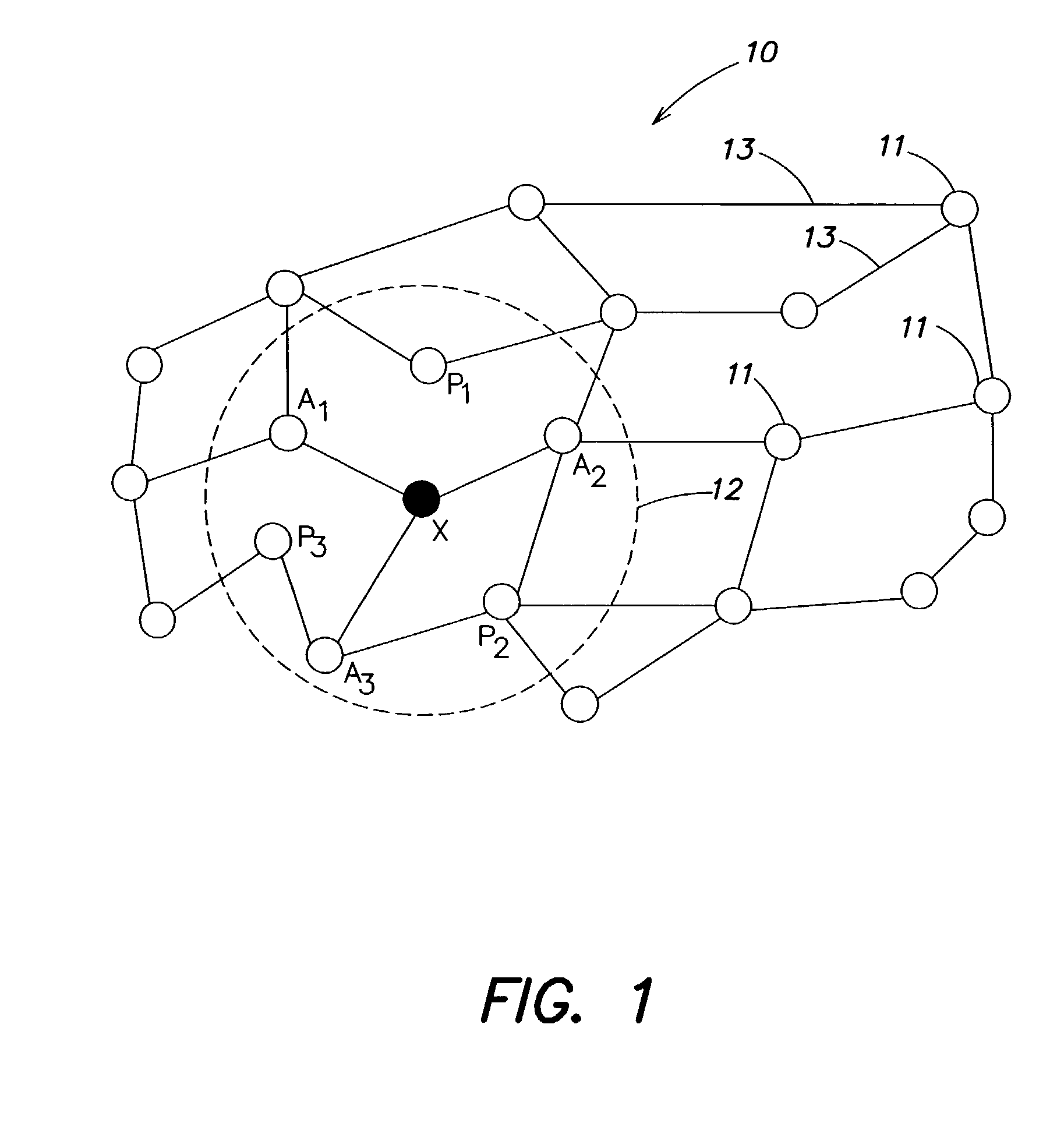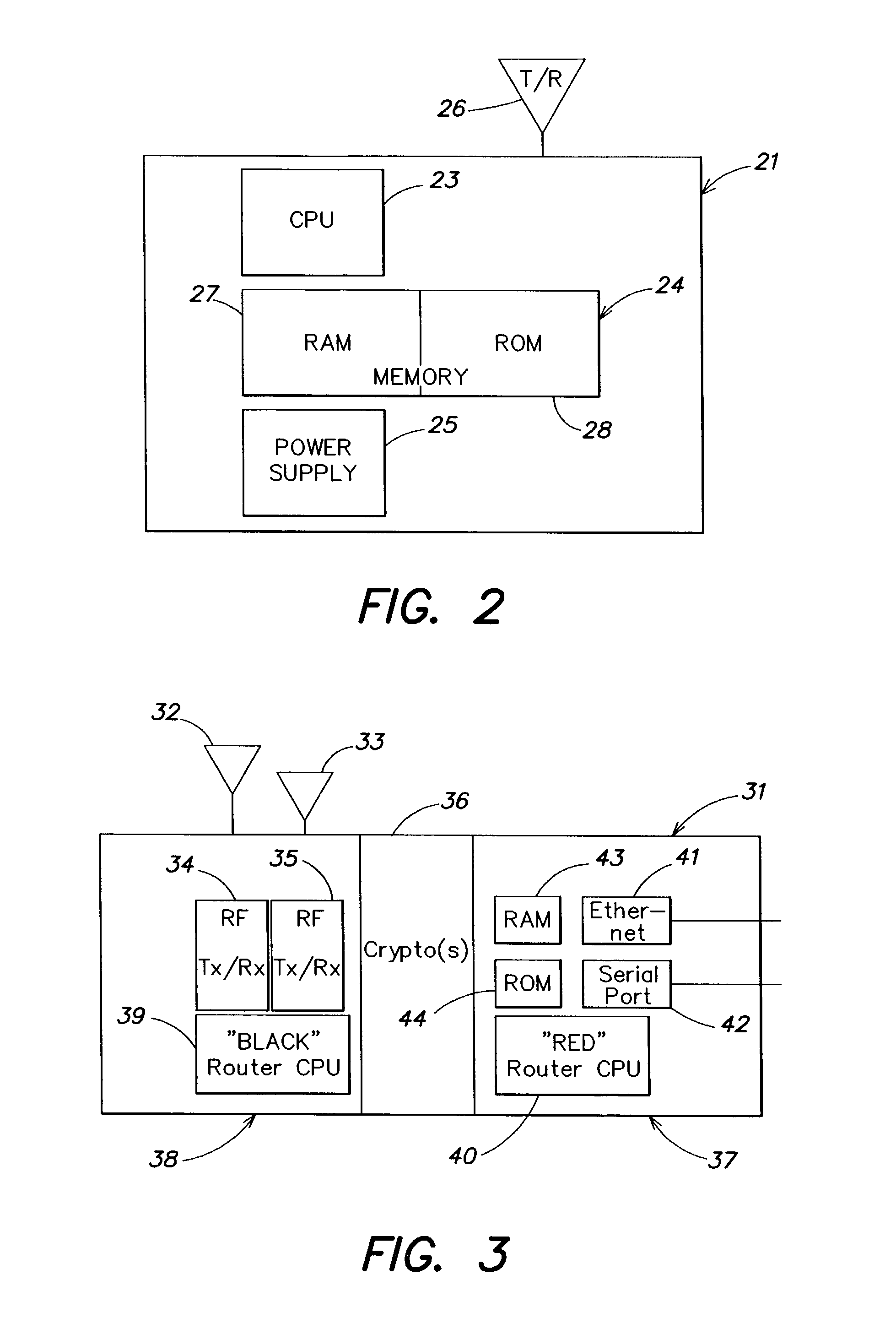Method and apparatus for varying times/channels of broadcast beacons
a technology of broadcast beacons and times/channels, applied in electrical apparatus, network topologies, wireless commuication services, etc., can solve the problems of reducing the power required for node operation, affecting the operation of nodes, and affecting the detection of beacon messages
- Summary
- Abstract
- Description
- Claims
- Application Information
AI Technical Summary
Benefits of technology
Problems solved by technology
Method used
Image
Examples
Embodiment Construction
[0029]Systems and methods consistent with the present invention are particularly useful in ad hoc wireless networks, i.e., a network formed by a plurality of mobile communications nodes. However, such systems and methods are also applicable to other types of networks, including networks composed of stationary nodes (such as sensor networks), those composed of a mixture of moving and stationary nodes, and so forth.
[0030]In ad hoc wireless networks various nodes may be mobile. A high level of node mobility necessitates that the router nodes be able to respond quickly to changes in the network. More specifically, beacon messages sent by a node that is moving allows new neighbors, i.e., nodes that are now coming into the wireless communication range of the moving node, to discover the moving node. Similarly, it allows nodes that are falling out of wireless communication range to determine that the moving node is passing out of range.
[0031]FIG. 1 is a schematic diagram of a plurality of ...
PUM
 Login to View More
Login to View More Abstract
Description
Claims
Application Information
 Login to View More
Login to View More - R&D
- Intellectual Property
- Life Sciences
- Materials
- Tech Scout
- Unparalleled Data Quality
- Higher Quality Content
- 60% Fewer Hallucinations
Browse by: Latest US Patents, China's latest patents, Technical Efficacy Thesaurus, Application Domain, Technology Topic, Popular Technical Reports.
© 2025 PatSnap. All rights reserved.Legal|Privacy policy|Modern Slavery Act Transparency Statement|Sitemap|About US| Contact US: help@patsnap.com



